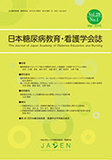Japanese
English
- 販売していません
- Abstract 文献概要
- 参考文献 Reference
本研究の目的は,2型糖尿病患者の“わかっているけれど,できない”という現象の構造を描くことである.分析対象者11名を,修正版グラウンデッド・セオリー・アプローチを用いて分析した.構造は,【空腹に敏感になった身体に苛まれる】を起点とし,【生活を通して考え,療養経験を培ってきたと思う】【普通の身体でなくなったと感じる】《意志の弱さを常に感じる》を辿り,分岐点となる【食事療法が“できていない”と“できない”でわからなくなる】を経て【自分なりの我慢で“できない”ことに対処する】に至るプロセスとして描くことができた.以上より,“できない”という言葉に対する身体感覚に焦点を当てることが重要であると示唆された.身体感覚に確信を持てないでいる為,行動として“できていない”と,身体として“できない”を分けて捉える必要があると考えられた
This study aims to describe the structure of the “knowing what to do but can't” phenomenon in patients with type 2 diabetes. We analyzed mentality transformation in 11 patients by the modified grounded theory approach. The structure of this phenomenon was described as follows: it began with the stage [afflicted by one's hunger-sensitive body], went through the stages of [having developed medical experience through one's lifestyle], [no longer feeling one's body as being normal] and <always feeling weakness of will>, then coming to the turning point of [unable to tell if one's dietary therapy is unsuccessful due to one's own inadequate execution, or if one cannot be successful due to reduced physical abilities], finally reaching the stage of [coping with “cannot be successful due to reduced physical abilities” situations through patience].
These results suggest that it is important to focus on diabetic patients' bodily sensations when they say “I cannot do it.”
Medical staff must understand that patients are not confident in their physical sensations, and therefore need to distinguish between situations where they are unsuccessful due to their own inadequate execution and situations where they cannot be successful due to their reduced physical abilities.
Copyright © 2020, Japan Academy of Diabetes Education and Nursing. All rights reserved.


